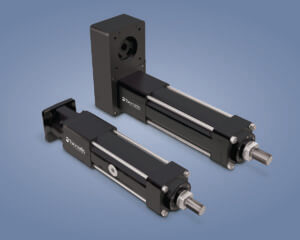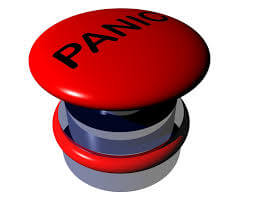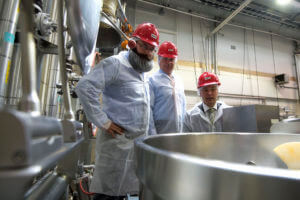
Electric cylinder helps advance physical therapy
You may think linear actuators are strictly industrial components. Time to think again. We provide electric linear actuators for an innovative piece of medical equipment – the VibeTech Rehabilitation Chair used in physical therapy.

Why single-source your electric linear motion systems
The trend in industrial component sourcing is to eliminate waste, reduce costs and improve efficiency. This often means consolidating suppliers into single-source relationships. Single sourcing can build stronger relationships with suppliers, boost system performance and increase the speed of procurement.
Machine designers can use a single-source approach to reduce time spent on sourcing, installing and testing electric linear motion systems.

Electric extreme-force linear actuators beat hydraulics in metal casting
Metal casting is precise work conducted in a high-temperature environment. The process requires precise control of timing, flow rates and temperatures to yield good parts.
Unmolding a workpiece requires both force and control. It’s a task often left to hydraulic cylinders, but their high-force capabilities come with significant drawbacks, like inadequate control and messy leaks. New, electric extreme-force linear actuators offer precision and clean operation.

The easy way to get a complete electric linear motion solution
When your machine design calls for electric linear motion, you have lots of decisions to make. Like what actuator to use…and what motor. Select the right actuator and it will reward you with top performance, reliability and long service life. But an electric actuator that’s not up to the task can be a long-term problem. Then there’s motor selection and mounting. It can be a tough and touchy process. Even if you integrate the actuator and motor yourself, our Your Motor Here® program (YMH) will take the guesswork out of selecting and integrating the motor when you use one of our actuators.

Motor mounting for electric linear motion
The motor is the power behind an electric linear motion system. An essential component. Designers can choose from a variety of motor types – stepper, servo, induction – and a myriad of motor manufacturers. Different applications will have different motor requirements. For those who elect to handle their own motor mounting, we’ve developed a new Technical Note on the subject.

Developing a strong industrial automation team
Panic’s in the air surrounding industrial automation employment, from engineering to production. While we don’t subscribe to the panic, we’re part of the automation universe so we face similar challenges. We design and manufacture electric and pneumatic linear actuators and motion control, so we need a wide variety of technical expertise from machinists, assemblers, technicians, quality control, engineers and more. We’re always working hard to attract and keep good people for our team.
Here’s how we’re approaching the issues of hiring and retaining great employees. We hope our practices can help you.

Lots more high-force linear actuator solutions with electric
Some machine designers still believe only hydraulic cylinders can handle high-force applications. But the fact is, electric high-force linear actuators are capable of 30,000 lbf (133 kN) maximum force and more, and they offer great affordability.
Some designers think the selection of electric high-force linear actuators is limited. But the truth is the range of electric high force actuation solutions is always expanding. With this expanding range of solutions, more existing applications can be converted to electric and new applications can gain the benefits of electric actuation.

How to ensure low cost linear motion
“People want to save money on their industrial automation systems,” says captain obvious. Equally obvious is the fact that no one wants to reduce output or product quality to save a buck. So how does a machine designer accomplish this? Save money without sacrificing performance and quality?
One way to ensure affordable automation systems and, specifically, low cost linear motion, is to stop looking at purchase price only and start thinking long term. Consider the total cost of ownership (TCO) of the equipment.

Keeping it clean: hygienic linear actuators for food safety
Cleanliness is serious business in food processing. The potential for contamination by microbes, chemicals and other foreign substances is real and always present. And food residue can be hard to eliminate. Keeping processing equipment clean makes good business sense. (Nobody wants their brand associated with foodborne illness.) Plus, the Food Safety Modernization Act (FSMA) makes it part of the law of the land. Food processors rely on their equipment to withstand the rigors of the processing environment. That’s especially true for hygienic linear actuators for food safety.

Electric valve actuators: The best choice for process control
Process engineers have several choices when it comes to actuators for rising stem valves – manual, pneumatic, hydraulic and electric. Manual actuators satisfy simple on-off needs. Pneumatic valve actuators are fast and low cost. Hydraulic systems can be a solution for high force applications and remote installations. For critical process control applications, though, electric valve actuators can deliver what process engineers are striving for - increased productivity, greater efficiency and less downtime. In other words, electric actuators improve processes and save money.

 Ask an Engineer
Ask an Engineer